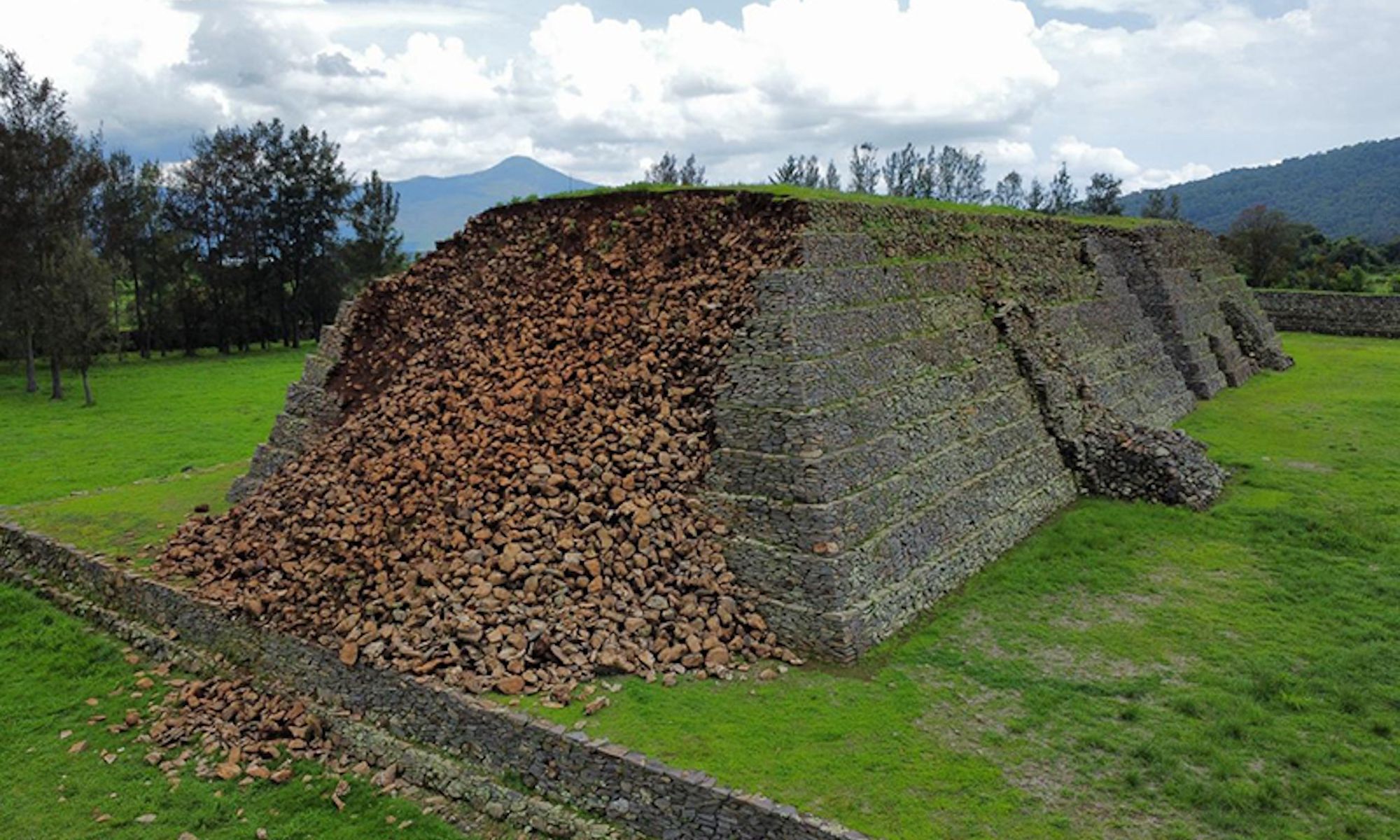The partially collapsed pyramid at the the Ihuatzio Archaeological Zone, in Michoacán Photo: Ramiro Aguayo, INAH
Heavy rains in Mexico’s Michoacán state have caused the partial collapse of an ancient pre-Columbian pyramid at the Ihuatzio archaeological site. The collapse occurred on 29 July, and the following day staff from a regional outpost of the federal Instituto Nacional de Antropología e Historia (INAH) visited the site to assess the damage.
An INAH announcement attributed the collapse in part to the use of outdated materials and techniques during prior restoration efforts at the site. It also cited pervasive drought conditions in the region that had made it easier for water to infiltrate and undermine the structure.
Ihuatzio was developed and inhabited between the 10th and 16th centuries, and reached the peak of its activity and influence as the capital of the Purépecha groups that came to dominate the region around Pátzcuaro Lake, from the 13th century until the arrival of Europeans in the region in the early 16th century.
The complex at Ihuatzio is one of several major archaeological sites in the region, which also includes Tzintzuntzan and Tingambato. It features two wide elevated walkways known as huatziri that delineate a large central square, the Plaza de Armas. At the plaza’s western end stand two large, rectangular pyramids built atop a low, wide base platform.
Overhead view of the partially collapsed pyramid at the Ihuatzio Archaeological Zone Photo: Ramiro Aguayo, INAH
The southernmost of these two pyramids is the one that partially collapsed last month. INAH has insurance policies for the sites it manages and filed a claim with its insurer, Agroasemex, the day after the incident at Ihuatzio; the resulting funds will help support restoration efforts at the site.
Prior to the downpour in late July, the region surrounding Pátzcuaro Lake had been experiencing a severe drought, and had lost more than 50% of its volume, according to the CNN affiliate Televista.
Natural disasters and extreme weather have become more severe and unpredictable due to human-caused climate change, posing serious risks to heritage sites and historic-preservation efforts. Last year, a report by the Foundation for Advancement in Conservation (FAIC) and the National Endowment for the Humanities (NEH) urged institutions and heritage groups to develop emergency action plans for natural disasters.
"The climate crisis will set the priorities of sites and collections to protect,” the report stated. “Some of the unknowns related to climate change are how our buildings and the environments in them will respond."

